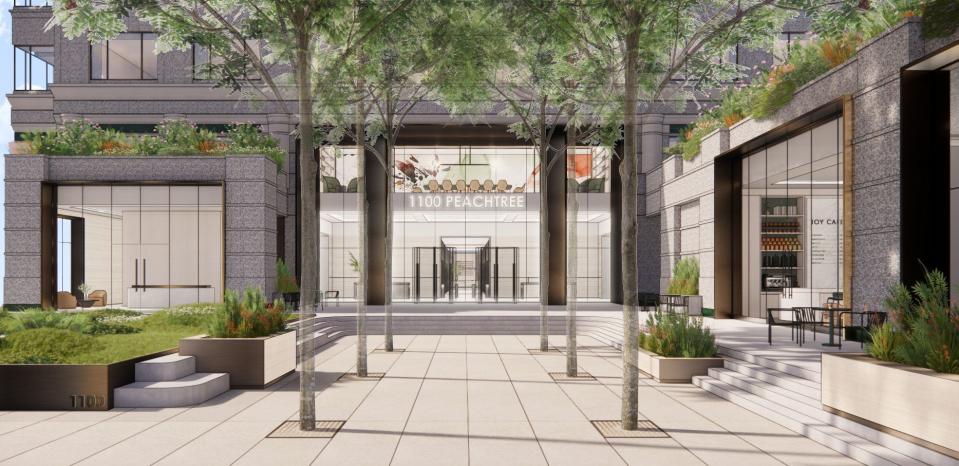Belief in Manulife US REIT’s potential recovery in 2HFY2022 'misplaced': RHB

RHB's Vijay Natarajan has kept 'buy' on the REIT but lowered his target price to 43 US cents from 64 US cents.
RHB Group Research analyst Vijay Natarajan is keeping his “buy” call on Manulife US REIT (MUST) even though he notes that his earlier view of the REIT’s potential recovery in the 2HFY2022 was “misplaced”.
“MUST’s sharp valuation decline indicates that the US office market remains in a state of flux,” he notes in his Jan 3 report.
Natarajan’s new target price of 43 US cents (57.66 cents), down from his previous target price of 64 US cents, reflects the REIT’s valuation decline.
The REIT, on Dec 30, 2022, revealed that the real estate valuation of its portfolio fell by 10.9% from US$2.18 billion to US$1.95 billion ($2.62 billion) based on the year-end valuations for 2022.
The decline, which came in worse than expected, was driven mainly by Figueroa, one of the REIT’s properties in Los Angeles, US. The property’s value fell by 33%, accounting for 48% of the total value decline.
“This was mainly due to: The imminent exit of the anchor tenant, TCW Group by end-2023, the downsizing of another Quinn Emanuel, and the cap rate rising by 100 basis points (bps),” Natarajan notes.
“On a blended basis, discount rates and terminal cap rate assumption by valuers are [an estimated] 40-50 bps higher,” he adds. “This was on the back of a sharp spike in rates, office transactions coming to a near-standstill in 2HFY2022 due to the lack of interest, and banks pulling back on financing.”
He continues: “Other assets which saw a double-digit percentage valuation decline include Plaza, Exchange in New Jersey, Penn and Centerpointe in Virginia highlighting the greater impact in gateway cities while secondary markets fared relatively better.”
The decline in valuation brought MUST’s gearing to the edge of 49%, making it the highest among the Singapore REITs (S-REITs) currently.
The REIT’s interest cover ratio (ICR) was estimated to be at 3.1x as at the end of December 2022.
“S-REITs are allowed a maximum gearing of up to 50%, provided the ICR is above 2.5x and up to 45% if the ICR is below 2.5x. As interest rates have spiked up sharply since 2HFY2022, we think the ICR could drop below 2.5x by end-2023 – indicating that remedial measures are needed soon,” says Natarajan.
In his report, the analyst raised the possibility of the REIT’s sponsor, Manulife, lending its support.
“MUST is currently in a strategic review to cut its gearing and unlock value. While the REIT has been on the active lookout for divestment opportunities, the current adverse market conditions has limited such options. Its sponsor, Manulife, currently manages global real estate worth of US$20.3 billion (as of 1HFY2023) and holds a 9% stake in the REIT,” he notes.
“We believe possible options for the sponsor are: Set up a real estate fund to buy some of MUST’s assets, or take a stake in the assets based on their latest valuations. It could also underwrite equity fund-raising at a premium, although the maximum 10% stake cap limits such options,” he adds.
On this, Natarajan has also reduced his distribution per unit (DPU) estimates for the FY2023 to FY2024 by 15%. This comes from trimming MUST’s dividend payout ratio to 90% compared to 100% previously as he expects the REIT to conserve cash. The lowered DPU also takes into account an adjusted occupancy rate and financing assumptions.
In addition, the analyst has upped his cost of equity (COE) estimate by 170 bps and lowered his terminal growth assumptions to 1.5% from 2.0%, resulting in his lower target price estimate.
“MUST has a top environmental, social and governance (ESG) score of 3.3 out of 4.0, and, as such, we apply a 6% ESG premium to intrinsic value to derive our target price,” says Natarajan.
As at 4.29pm, units in MUST are trading 2.5 US cents lower or 8.33% down at 27.5 US cents.
See Also:
Click here to stay updated with the Latest Business & Investment News in Singapore
Manulife US REIT's aggregate leverage now at 49% based on updated asset valuations
Citi resumes 'buy' on Digital Core REIT with TP of 82 US cents
Get in-depth insights from our expert contributors, and dive into financial and economic trends

 Yahoo Finance
Yahoo Finance 